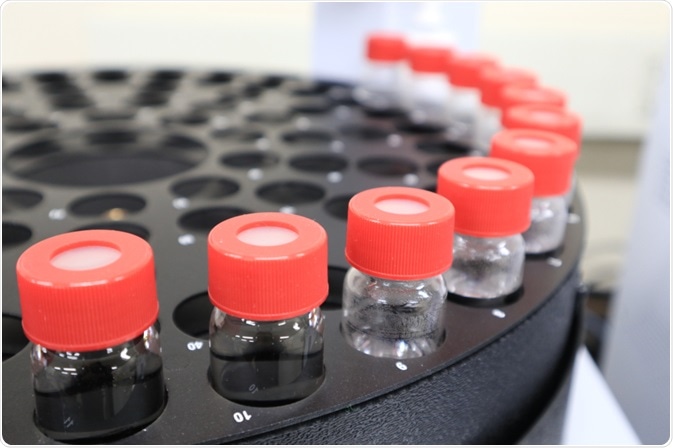Immobilized artificial membrane (IAM) chromatography, first introduced by Charles Pidgeon and his colleagues, is used to simulate the biological cell membranes in drug discovery and development.
 Image Credit: hotsum / Shutterstock
Image Credit: hotsum / Shutterstock
IAM consists of a monolayer of phosphatidylcholine covalently bound to an inert silica support. A highly reproducible method to measure drug adsorption, IAM chromatography is inexpensive and fast in comparison to its counterparts.
It has been used as a vehicle to transport drug across cellular membranes, to reconstitute membrane proteins, and to predict drug permeability.
Drug permeability and lipophilicity
Drug discovery
Drug discovery plays a fundamental role in the world of pharmaceuticals. Scientists discover new drug targets for selective binding on a constant basis. A plethora of approaches for drug discovery exist and influence the availability of improved and curative therapies for various disease types.
Drug targets
Integral membrane proteins regulate and maintain both extracellular and intracellular environments. They make up approximately 25% of the human proteome and are a common target for drugs (membrane proteins account for roughly 60% of drug targets.)
Drug delivery
IAM have liposomal vesicles within them. Nanoparticles like liposomes are used in the drug delivery and assist in the analysis of various compounds as they can garner information from the passive diffusion drugs and bind to various membrane sites.
High-Performance Liquid Chromatography
High-performance liquid chromatography (HPLC) is a powerful technique used for its ability to separate and purify different compounds based on their polarity.
HPLC provides a precise approach to quantify drug contents in biological specimens. A modified version of column chromatography, it uses high pressure to force solvents down a column for analysis, making it a much quicker and efficient process.
The process
The process begins with the injection of compounds into the column. When the compounds have been separated and passed through the column, they are analysed using a detector.
The most common approach to detect is the use of UV light as it can be absorbed by compounds at different wavelengths, enabling them to be differentiated from one another. The data collated from the detector is recorded as a series of peaks, and each peak is representative of a different compound.
Separation of compounds based on polarity
The column used for HPLC is lined with silica particles. Non-polar compounds can travel through the column much more quickly than polar compounds as their interaction with the stationary phase silica particles is weak, resulting in poorer retention times (the time taken for molecules to travel through the column) on the IAM column.
Providing a larger surface area than traditional column chromatography, HLPC allows further interactions with the stationary phase and better separation of compounds.
Advantages of IAM
IAM chromatography is a form of HPLC, where the IAM is the stationary phase. While traditional approaches to predict permeability use Caco-2 cell line cultures (which are expensive), IAM chromatography uses cost-effective phosphatidylcholine and silica.
The phosphatidylcholine molecules within the IAM are covalently bound to the terminal carbons on the silica particles. When a solvent passes through the IAM stationary phase, the orientation of the phosphatidylcholine molecules changes, forcing them to face outwards.
IAM chromatography can measure phospholipophilicity due to its ability to mimic the interaction of analytes with cellular membranes (these interactions are a combination of hydrogen bonding interactions, and hydrophobic ion pairing.
Further Reading